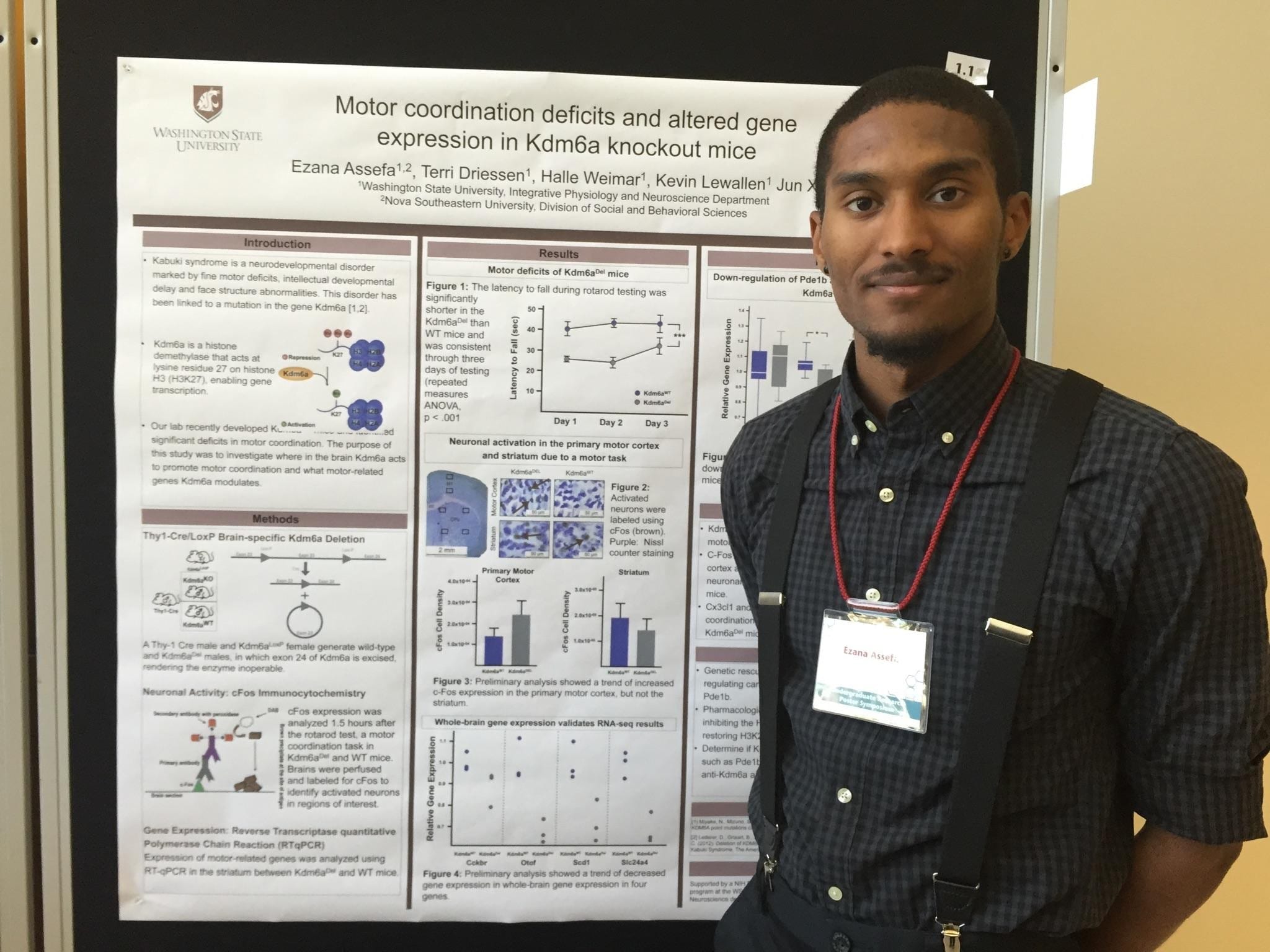Ezana Aseffa
If I could summarize what motivates me to participate in research, it would be the process of designing an experiment to test a hypothesis. I’ve always envisioned a mental scene similar to the differential diagnoses that would take place on the show “House, M.D.,” but with a much less tense atmosphere, of course. When everyone, from the head of the lab to the undergraduates working in the lab, brainstorms and shares different ideas to tackle a hypothesis and discover previously unknown information, it’s so intellectually exhilarating and addicting.
When Dr. Tartar posted the link for the internship in the Summer Undergraduate Research Experience (SURE) at Washington State University on the Nova Neuroscience Facebook page, I immediately visited it and began gathering everything I needed to submit my application.
Anxiety began to build after a month went by; I had already been rejected from three internships and hadn’t heard back from the rest of them. Finally, almost three months later, I received an email from the director of the internship at WSU that I was accepted.
I arrived at WSU at the end of May, and it was literally a race from that very moment. First, there were the necessary introductions, then the overview of the program, and, finally, I was whisked away to meet the members of my lab.
One of the most fulfilling parts of the internship was the fact that I began working on a current experiment being carried out in the lab. They didn’t give me a side project that would keep me occupied in order to prevent me from messing up anything they deemed important; I worked on those important projects.
The project was centered on an increasing field of research that explores the role of epigenetics in different disorders. Epigenetics deals with changes in physiological phenotypic traits due to external changes rather than genetic ones. This lab specifically studied how chromatin regulators affected gene expression in a mouse model of Kabuki syndrome, a neurodevelopmental disorder characterized by face structure abnormalities, some cognitive development delay and fine motor deficits.
I learned so much about genetics and how it is interwoven with neuroscience, even to the point where I would say it is a critical component of neuroscience; you can’t study neuroscience without considering genetics. The program itself was very helpful to me as a student, and the program’s organizers did a very good job of making all of the students feel welcomed at the university and to the community.
After this internship, I feel like I came back to NSU as a smarter consumer of information and science. One of the main reasons I seek out internships like this one is to develop my critical thinking skills in order to train myself as a future professional, M.D. or Ph.D. I’m learning more and more that asking the right questions can lead you to a wealth of knowledge that may have been otherwise inaccessible.
Another important lesson I learned is the cohesiveness necessary for a lab to run effectively. I had the opportunity to speak with other people participating in different internships at WSU that summer, and the horror stories of their experiences with their labs made me appreciate how welcoming my lab was to me and how cohesive they made things for me to begin working.
Overall, this has been one of my most enriching experiences in my collegiate career, and I definitely plan to continue pursuing more internship opportunities this upcoming summer.


